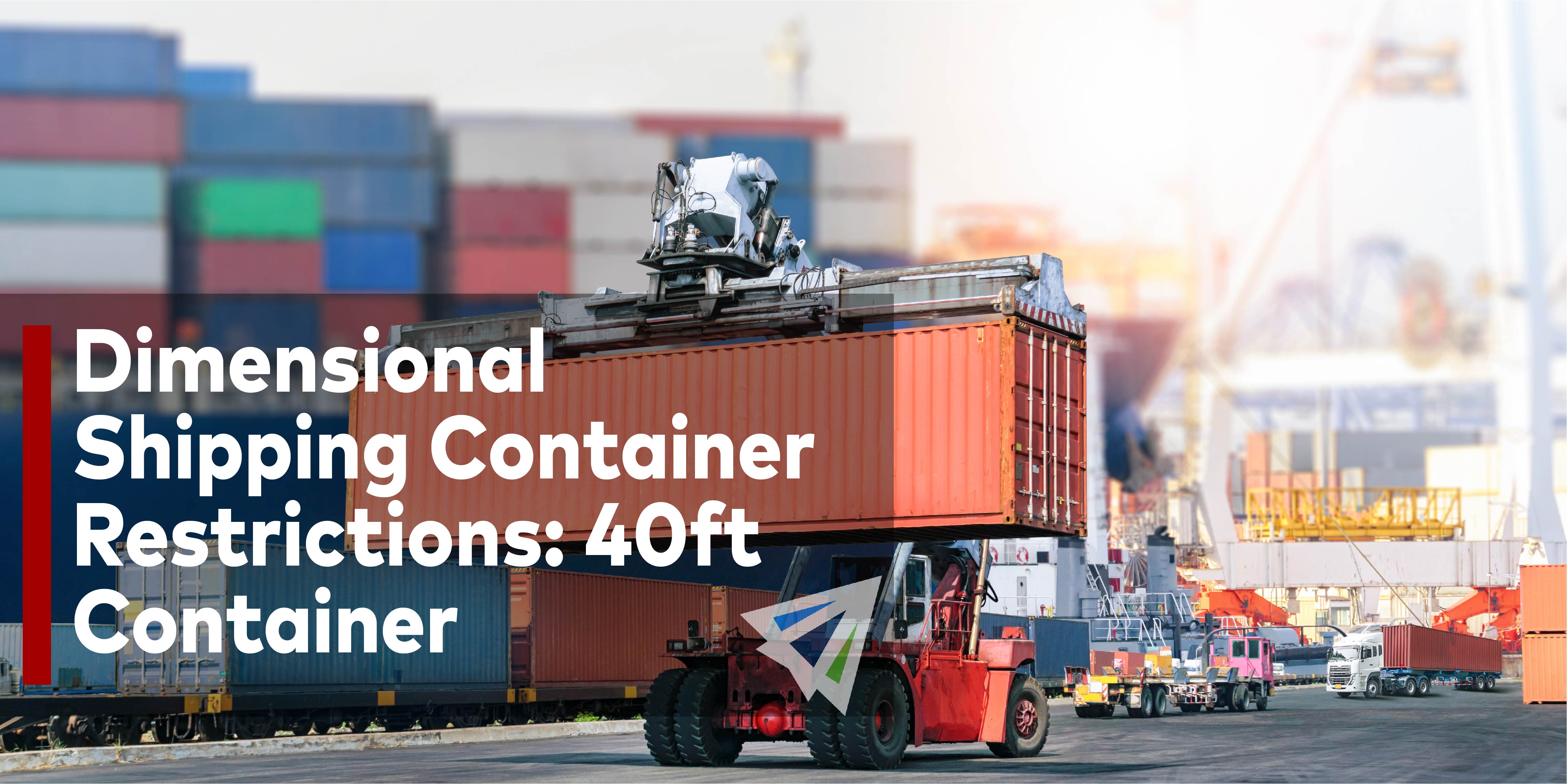We’re in the middle of a “Shipping Container Restrictions” series, talking about the dimensional restrictions for common shipping container sizes. In our last post, we covered dimensional shipping container restrictions for 20ft containers.
One of the major points covered in the prior article is the importance of the difference between maximum width/height and maximum loadable width/height. Just because a container has a max width and height of “X”, doesn’t mean you can actually physically load that much in. More on that later.
40ft Shipping Containers: Dimensional Restrictions
Here is a quick overview of the dimensional restrictions for 40ft shipping containers, as well as a few pointers along the way regarding how much you should actually load into the containers:
Width
The maximum width of a 40ft shipping container is 7’8″. That is the internal maximum width, so that isn’t factoring in any other pieces such as the door, the latches, and hinges built onto the front of the container, which as we mentioned earlier in this article, end up taking room.
The maximum loadable width of a standard 40ft shipping container is 7’4″. That number is smaller due to all things associated with the door of a shipping container. The door along with the hinges and latches ends up taking a bit of room, making the maximum loadable width a bit smaller than the total internal width of the container.
Height
We encounter a similar scenario with the height of 40ft standard shipping containers. Although you’d like your product to “fit like a glove” into the shipping contaienr, the maximum height and maximum loadable height are going to be different numbers.
The maximum internal height of a 40ft shipping container is 7′(‘, while the maximum loadable height of the container is 7’4″. Not to sound like a broken record here, but once again, the reason for the loadable height of the shipping container being different than the maximum height is due to the door and all associated parts at the front of the container. In order to properly seal and lock the container, manufacturers have to take up a little big of room to properly build in the latching mechanisms, and that ends up digging a few inches into the loadable height and width of the container.
Length
There’s no “loadable” difference for the length as there is for the height and width of a 40ft shipping container, right? Well, not quite…
While there isn’t a difference in total and loadable height and width, the length of a 40ft shipping container isn’t exactly 40′. The total internal length of a 40ft shipping container comes out to 39’5″. Feel robbed much? Well… that’s how it goes.
An extra 6″ – on average – is used up by the welding and door components inside the container. That will vary a little bit from container to container and from manufacturers, but you should safely bet on a total internal length of 39’6″ for a standard 40ft shipping container.
Conclusion
There you have it – a standard 40ft shipping container isn’t actually so “standard” after all. The max width and height of the shipping container are different than the loadable width and height due to the door’s components, and the same actually applies for the length of the container as well. Once you factor that in, you’re shy a whole 6″ on the loadable length of the container.
If you have questions regarding whether or not your shipment will fit in a standard 40ft shipping container, reach out to one of our team members! We are incredibly experienced with shipment consolidation and loading and are happy to help you and your team figure out whether or not your shipment will fit into a 40ft container.
While dimensions are important to consider depending on your container size, so is the weight! Read more about weight restrictions.
